This section is where you can find out about and learn beading techniques. Now, these cover a huge range. Depending on your background, you may be approaching this with some ideas in mind. So, if you are looking to learn something specific, of course you can head straight to the appropriate section and start learning. But I would also invite you to explore. Maybe you will stumble across a technique or style that you didn’t even know about.
To summarise, beading techniques are basically ways of using beads to create jewellery and ornamental objects. You will gain a huge amount of satisfaction from learning how to work with beads. I’ve got a huge range of different things you can try. So, you are sure to find something that interests and inspires you. In each section, you will learn how to get started, with free tutorials and links to projects to try.
So, let’s take a closer look. You can use the dropdown menu (that will appear when you hover over the main menu), or keep reading and allow me to introduce you to the options on offer.
Remember, you can also join my mailing list to receive a monthly email with all the new posts, so you won’t miss a thing. Click here to sign up now.
Basic Beading
Do you want some help with getting started, learning basic techniques and skills?
In this section, I have a range of posts to help you with basic beading techniques and skills. So, this would include basic stitches, like spiral stitch. Essential skills like threading needles or joining new threads and finishing beading thread. It’s wide-ranging. So, have a browse and see if you can find the answers you’re looking for.
CLICK HERE TO BROWSE THROUGH BASIC BEADING POSTS
Would you like to learn Jewellery Making?
In this section, I look at basic jewellery making techniques. So, this would include stringing and working with findings to create necklaces, bracelets and earrings. You may see some overlap with the basic beading. For example, both sections look at using clasps. This section includes tutorials you can try to help you learn.
CLICK HERE TO LEARN ABOUT JEWELLERY MAKING TECHNIQUES
Would you like to learn Bead Embroidery?
This section teaches you bead embroidery techniques. You can find out how to start and finish your work. Learn some of the bead embroidery stitches, and get inspiration for your own work. I have also linked to some tutorials you can try.
CLICK HERE TO LEARN ABOUT BEAD EMBROIDERY
Do you know any Kumihimo Beading Techniques?
Learn how to use beads in Japanese braiding (you can see a sample in the photo above, left). This technique is called Kumihimo and you can use it to make beautiful jewellery. It requires a few specialist tools, but these are all covered in this section. You also get links to tutorials you can try, designers to follow, and everything to get you set up for starting to learn Kumihimo.
Would you like to learn about Polymer Clay?
This is something that is related to beading. You can use Polymer clay to make your own beads. Then use these beads to create unique jewellery. So, this section will teach you how to work with Polymer clay. Again, you will need some specialist tools (all explained) and materials. You can learn from top designers and get tips to help you. Once you have started making your own beads, come back and use the making jewellery section to learn how to create with them.
CLICK HERE TO LEARN POLYMER CLAY
Would you like to learn how to do French Beading?
French beading is basically making 3-D flowers. To do this, you will be stringing seed beads onto wire, then shaping them into petals, leaves and flowers. You can turn your flowers into bouquets, or pot plants (as you see in the photo above right). Or use them to create beautiful arrangements for your home. French beading is a really easy way to get into beading. It’s how I first began learning. So, in this section, I will teach you all about the tools and materials. Plus, you can learn the basic techniques and get links to projects to try.
CLICK HERE TO LEARN FRENCH BEADING
Would you like to learn about Loom Beading Techniques?
We talk about bead weaving in two contexts. So, you might see references to ‘off loom bead weaving’. I’ll come back to those techniques next. In this section you can learn how to weave beads together on a loom…bead loom weaving. So, you will need a loom for this. But most of your other tools are standard. You will be working with seed beads and you can create beautiful jewellery and ornamental wall hangings. This is a great technique to learn as a beginner. In this section, you’ll find out what you need, and get taken step-by-step through a simple loom bracelet project.
CLICK HERE TO LEARN BEAD LOOM WEAVING
Bead Weaving Techniques
Now, these are the techniques that involve using needle and thread to stitch beads together. You will commonly be working with seed beads. Although this can include both the traditional and the newer shaped seed beads. (You can find out all about the materials in the beading supplies section featured in the menu at the top of this page).
There are a lot of different ways in which you can stitch beads together. We call these stitches. Each stitch or technique gives your beadwork a different look and feel. Within each stitch, you have a lot of variations. So, you can stitch flat pieces of work, or 3D. You can increase, decrease, create tubes, and more. In each of these sections, I have taught you the basics of the stitch and its variations. Then you will get links to tutorials and projects to try.
Would you like to learn Brick Stitch?
This beading technique gives you a very solid, flat piece of work. The beads form a pattern like bricks on a wall – hence the name. You can also create tubes, which you can use as ropes to make necklaces and bracelets. The technique works best with cylinder beads, but is also fine with rocailles. In this section, you can learn all the different variations of brick stitch.
CLICK HERE TO START LEARNING BRICK STITCH
Would you like to learn Diamond Weave?
This is a very modern bead weaving technique, developed by beaders who are still alive and beading today. It gives a very flexible fabric, and is perfect for creating jewellery. You have several variations you can learn and try.
CLICK HERE TO LEARN ABOUT DIAMOND WEAVE
Would you like to try Herringbone stitch?
This beading technique creates a flat fabric, or can be done to make a rope. You have a few interesting variations to try. Although you will traditionally use seed beads, this technique also works well with some of the two-holed beads. I’m still putting together the full instructions for you, so please check back (or make sure you’re on my mailing list, so you don’t miss out).
CLICK HERE TO FIND OUT ABOUT HERRINGBONE STITCH
Would you like to learn how to do Netting?
This is another bead-weaving technique with strong links to African native beading. Again, it creates a flexible fabric or a lovely tubular rope that is great for making necklaces and bracelets. You have a few variations you can learn. I will be adding tutorials to teach you more about this. For now, you can find more details by…
CLICK HERE TO FIND OUT ABOUT NETTING
Would you like to learn how to do Peyote stitch?
I think this may be the most widely-known of these beading techniques. It is an incredibly flexible stitch, with endless possibilities. So, you can create fabrics – they look a bit like brick stitch on its side. You can also make tubular ropes for necklaces and bracelets. But, most exciting of all, this technique has quite a solid finish. So, you can use it to create complex 3-dimensional work, like beaded boxes (my speciality). You have a lot of variations to learn, but I have covered pretty much all of them in this section. So you really can use this to master Peyote stitch.
CLICK HERE TO LEARN AND MASTER PEYOTE STITCH
Would you like to learn how to do Right Angle Weave?
This bead-weaving technique comes in a couple of forms. Basic right angle weave (RAW) gives you a flat structure that is great for making bracelets, necklaces and bags. In a way, it’s a form of netting. You have a few variations you can try and you can use it with traditional seed beads, or shaped beads. It even works well with pearls and crystals. This form is shown in the left-hand photo, above.
In its second form, you can create a dimensional structure. Cubic Right Angle Weave (CRAW) forms little ‘building blocks’ which you can use to make boxes and other structures. Then you also have variations using 3-bead or 5-bead structures, often called Prismatic Right Angle Weave (PRAW) or Triangular Right Angle Weave (TRAW). Use these variations to make beaded beads. This form is shown in the central photo, above.
In this section, I have taught you all these variations, so you can really become expert in this type of bead weaving.
CLICK HERE TO LEARN ALL THE RIGHT ANGLE WEAVE VARIATIONS
Would you like to learn Square Stitch?
This bead-weaving technique is one of the least commonly used. Possibly because it offers fewer possibilities than some of the other techniques. Or possibly because you can easily achieve the same effect using a bead loom. I will be adding a full guide to help you learn the technique. But until that is ready, you can find out a little more and get some links to tutorials.
CLICK HERE TO LEARN ABOUT SQUARE STITCH
Do you need some tips for any Beading Techniques?
In the final part of this section, I offer you a whole lot of beading tips. They apply to all the beading techniques you’ve been learning about. So, have a browse through. This is great for everyone. If you are just starting out, you can learn a few tips to help you avoid mistakes. If you’ve been beading for a while, then maybe you will find some clever hacks that you had never thought of. All these ideas are here to make your beading life easier and more enjoyable.
CLICK HERE TO BROWSE THE BEADING TIPS
And don’t forget, if you want to be certain that you don’t miss out on any new stuff, join my mailing list. You will get an email once a month, just summarising everything that’s new on here. I will also give you a welcome gift when you sign up. So, if that sounds good…
CLICK THIS LINK TO JOIN THE MAILING LIST AND BECOME A BETTER BEADER




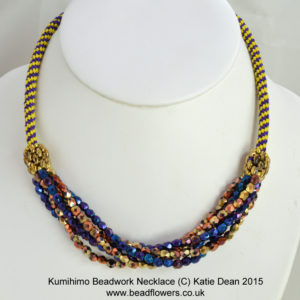

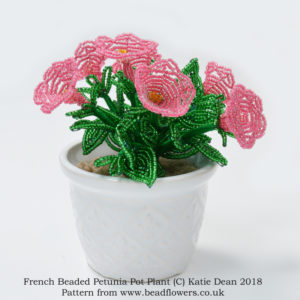

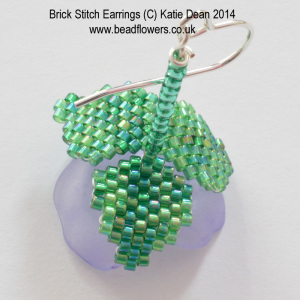
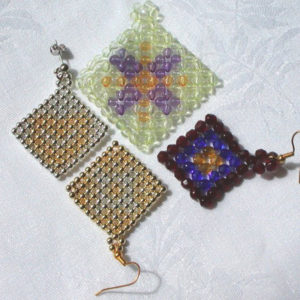



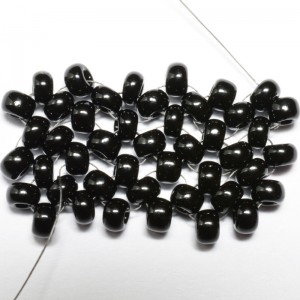


The “Ava bead” necklace instructions are to do Mraw around the rivoli. If don’t know how to do the stitch go to your web-site and get the instructions. I can’t find anything about MRAW. Am I reading the instructions wrong?
Thanks
Judi K
Hi Judi, you’re reading the instructions right – the free technique sheet for Modified Right Angle Weave (MRAW) is on the beadflowers.co.uk website (not this website!) – this link should take you straight there. http://beadflowers.co.uk/beads/tutorials/modified-right-angle-weave-free-technique-sheet/
You’ll be pleased to hear that MRAW is, I think, a little easier than the traditional RAW – or at least, a lot of my students find it so! I hope you will agree and thanks for getting in touch.
Katie
Think I was just not focused at the time I sat down to do the necklace. After I sent the e-mail I sat down and did the bezel and have the necklace finished. Guess I just had to look away for awhile. I did a bracelet to match and it’s really cute.
Thanks
Judi
I’m so pleased to hear that! Sometimes the brain just doesn’t want to oblige us and a break is all it needs! I thought this would make a lovely bracelet, so I’m really thrilled to hear you’ve done it.
Thanks ever so much for letting me know how you got on. Happy beading!
Katie
Hi, I’m trying to do a brick stitch around a coin shape bead and one side just seems to be loose, am I doing something wrong or is it not possible to do a tight stitch around a coin bead? Any help you can give me would be great.
Thanks,
Maria
Hi Maria – it should be possible to stitch around a coin shape. Brick stitch may not be the best choice of technique. I would more usually go for Peyote or Right Angle Weave. Because, in order to hold the beading snug, you need to decrease a little over the front and back of the coin and that’s not always so easy with brick stitch…not impossible! It’s hard for me to say if you’re doing something wrong without seeing a photo. So, if you want to send one to beadflowers@btinternet.com, I can take a closer look. You may also find this book helpful: https://beadflowers.co.uk/beads/books/bead-embellished-cabochons/
I hope that helps a little – do email me if you want extra advice.
Katie
This is all too complicated to me. I prefer to just spill a bunch of seed beads on the floor and spend the rest of my life trying to find them all. I swear some of them must be having babies because I keep finding them everywhere.
LOL – I think you’re right…I’m sure they breed! They seem to turn up in the most unexpected places!!
Hi Katie, I’m having trouble finding the right colors of delicas beads. when i print
patterns some of the color numbers do not match. i have color charts. do they change lot colors?
Hi Mary Katherine, I’m sorry to hear that – usually the beauty of delicas is that the colour codes make it so easy to match beads. But, yes, it is possible that some codes have changed over time. If you are using older patterns, maybe Miyuki has since changed things up a little – they do bring out a lot of new colours regularly. It’s hard to offer much help without knowing specifically what colour codes you are seeking.